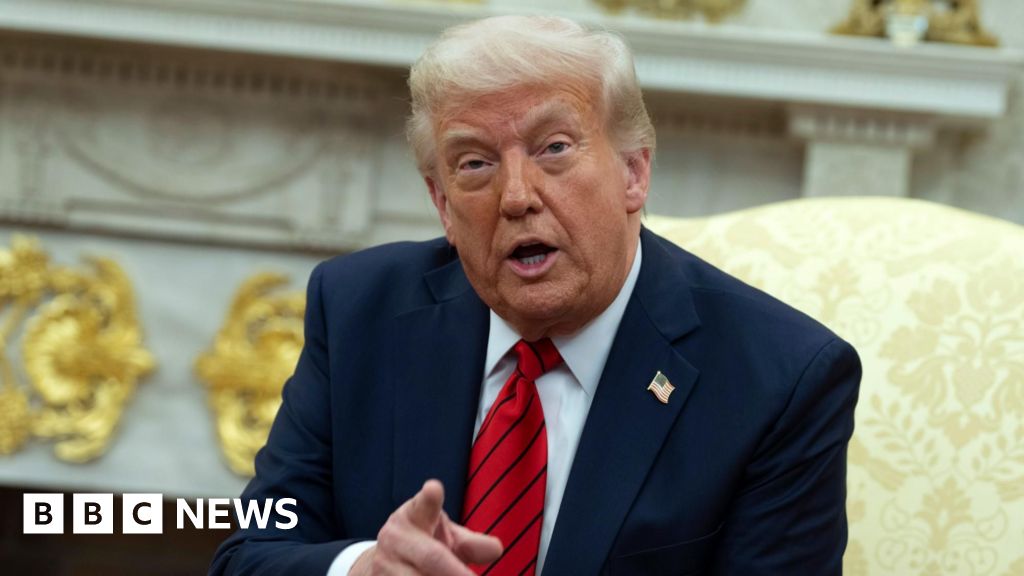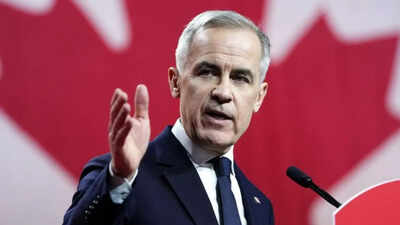Rising Prices: The Impact of Trump's Tariffs on US Consumers

Over the past few years, consumers across the globe have become increasingly accustomed to experiencing the sharp rise in prices affecting a wide array of essentials. From the cost of pre-owned vehicles to household utility bills and even the basic loaf of bread, the inflationary pressures being felt today represent the most significant shock to advanced economies since the inflationary crises of the 1980s.
While inflation has shown signs of cooling in the last year, discussions about soaring prices have resurfaced, largely fueled by Donald Trumps escalating trade war. Economists and experts are warning that the imposition of tariffs on imports from key trading partners will inevitably lead to higher prices for American consumers, though the situation appears to differ for other nations.
As trade policies can shift rapidly, experts note that the anticipation of another wave of inflation could become a self-fulfilling prophecy. Companies may leverage this expectation as justification to raise prices. Paul Donovan, the global chief economist at UBS Wealth Management, commented, A narrative [is needed] to tell consumers why prices are going up. Tariffs provide exactly that story.
Moreover, the inflationary waves witnessed post-pandemic have altered consumer attitudes. Donovan explains, Because we have had inflation in the past few years, consumers are more accepting that this is what happens.
In the political arena, Democratic Senator Elizabeth Warren has sounded the alarm about the potential for Trumps tariffs to facilitate corporate profiteering, suggesting that companies could use the tariffs as a pretext to engage in price-gouging for various goods, even those that are not directly impacted by additional border taxes. This phenomenon has been labeled greedflation, where businesses inflate their prices to enhance profits rather than adjusting prices to reflect legitimate cost increases.
For instance, this week, Sony made headlines by announcing a price hike of up to 25% for its PlayStation 5 in several markets. While the Japanese corporation did not overtly attribute the price increase to Trumps trade policies, analysts believe that the move is likely a proactive measure to mitigate the impact of anticipated tariffs.
Interestingly, the increase in PlayStation prices is not confined to the US market; it extends to the UK, Europe, Australia, and New Zealand. This underscores how multinational companies can raise their prices even in regions not directly subject to tariffs, driven by the escalating costs associated with complex international supply chains amidst a global trade war.
Claus Vistesen, chief eurozone economist at Pantheon Macroeconomics, remarked, Sonys decision to raise PlayStation prices outside the US offers a glimpse of how Trumps tariffs could prove inflationary abroad in certain categories. Sony, however, has opted not to provide additional comments on this situation.
According to experts, the inflationary risks are particularly pronounced for US consumers, who saw headline inflation dip to 2.4% in March, as reported earlier this month. However, some economists are warning that inflation could surge to 4% this year. Jerome Powell, chair of the US Federal Reserve, indicated that tariffs could highly likely lead to a temporary uptick in inflation, posing a challenge for monetary policy.
Even after Trump's partial retreat on some of his most stringent liberation day tariff threatsreducing the baseline charge on all trading partners to 10% and imposing a staggering 145% rate on certain Chinese imports, while allowing for exemptions for specific electronicsAmerican consumers are still confronting significant increases in living costs.
Recent analysis from the Yale Budget Lab, released this week, highlighted that taking into account Washingtons latest strategy, US consumers are facing an overall average effective tariff rate of 28%, the highest rate recorded since 1901. The report warns that consumer prices could rise by 3% in the short term, translating to an average household loss of approximately $4,900 (3,700), with notable price increases targeted at clothing, footwear, and electronic goods.
Martha Gimbel, co-founder of the Budget Lab and former member of Joe Bidens White House Council of Economic Advisers, pointed out that the challenge lies in the uncertainty surrounding final policy decisions. Gimbel stated, The fact that consumer expectations of inflation are starting to go up suggests this is going to spill over and take off from an inflation standpoint. She also noted the unfortunate timing, as these tariffs come at a moment when inflation seemed to be receding, allowing American households to feel more optimistic about their economic situation.
A particularly salient piece of research that has gained considerable attention among economists recently is a study examining the tariffs Trump enacted on washing machines during his first term. This study revealed that prices for domestic washing machines and clothes dryerswhich were not subject to tariffsalso increased significantly.
Jerome Powell referred to this research as a great example, emphasizing how tariffs can lead to price increases across the board. He remarked, Manufacturers just, you know, they just followed the crowd and raised it.
The tariffs, which ranged from 10-50% and were implemented in 2018 following complaints from Whirlpool regarding foreign competitors flooding the market with affordable machines, were intended to protect American jobs. While this approach did succeed in creating approximately 1,800 new jobs, it came at an exorbitant cost, with consumer prices surging by nearly $1.5 billion, or about $817,000 per job created.
Felix Tintelnot, one of the studys authors and now an economics professor at Duke University, shared that valuable lessons can be gleaned from this analysis. He noted, Im not a fan of the term price gouging. I think one needs to consider price changes on goods beyond those directly affected by tariffsbut one might also label this as smoothing out price changes. He added, If there hadnt been the opportunity to raise dryer prices, washer prices might have risen more.
The potential for companies to exploit tariffs as a cover for price increases is acknowledged even within Trumps circle of advisors. Consequently, should inflation rates increase, it is likely that Trump will start criticizing corporations for engaging in price gouging practices.
Andrew Ferguson, chair of the US Federal Trade Commission, emphasized that the competition watchdog is closely monitoring the actions of American companies to ensure they are competing vigorously on pricing. These necessary tariffs should not be interpreted as a green light for price fixing or any other unlawful behavior, he stated.
Yet, Paul Donovan argues that US companies should take advantage of the situation. With imports of foreign goods being taxed, a US manufacturer can choose either to increase profit margin or increase market share, he explained. He added, If, for example, your competitors are being charged [a tariff of] 20%, lets raise our prices 15%. Then you increase margin, and you also increase market share a bit.
This strategy, however, may prove challenging in the wake of multiple rounds of price increases since 2021, which have limited the ability of companies to raise prices further without risking a decline in sales. Nevertheless, Donovan posits that consumers are bracing for additional financial burdens.
My suspicion is, in an environment where there is a broad expectation of higher inflation in the US, where consumers are generally expecting it, companies will feel more able to go for the price increase option, he added.
Amid these discussions, expectations regarding inflation remain starkly divided along political lines. In the fractured landscape of US politics, Trump supporters believe tariffs could be the solution to the economys challenges, while Democrats and mainstream economists label them as misguided.
In the latest consumer sentiment survey conducted by the University of Michigan, a critical measure monitored by the Fed, Democratic voters forecast inflation will soar to 7.9% within a year. In contrast, Republicans predict a dramatic decline to just 0.9%. Donovan observed, Its all about the cable news channel you are watching. He continued, Some are saying this is the end of days, while others assert: Tariffs are fine; they dont affect Americans, the foreigners pay them.
Interestingly, independent voters foresee a sharp rise in inflation as well, estimating it will reach 6.2%. The median expectation across all political affiliations stands at a rise to 6.7%, the highest since 1981.
When asked about this political divide, Gimbel remarked, I am trying to answer this politely. People are not necessarily paying attention to facts on the ground. She expressed skepticism about the Democrats high inflation predictions but also noted the significant increase in inflation expectations among independents, indicating that these sentiments are likely to take hold.




























